One of history’s most influential (not to mention infamous) leaders, Catherine de Medici still enthralls and intrigues the world five hundred years after her birth. Case in point: The Serpent Queen, the new period drama series based on Leonie Frieda’s best-selling biography, Catherine de Medici: Renaissance Queen of France.
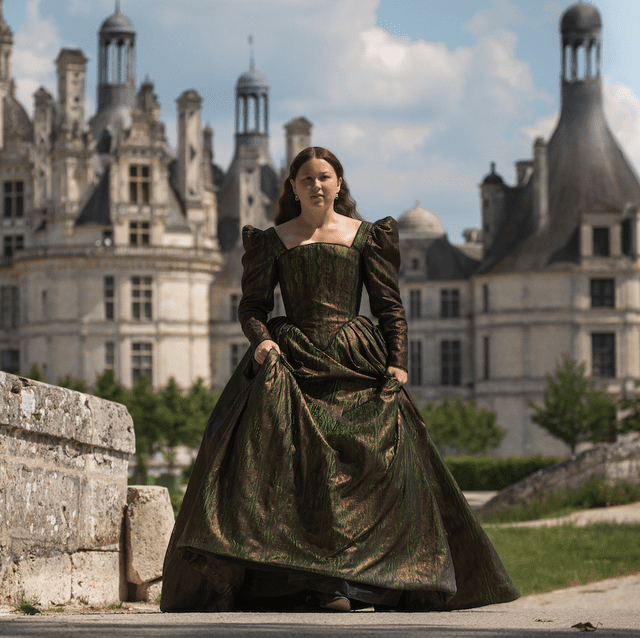
In 1533, the Florentine heiress, aged fourteen, was married by her uncle, Pope Clement VII, to Henri, Duc d’Orléans, the second son of a cash-strapped François I, King of France. Paris, at the time, was not yet the cultural centre of France (or even Europe; that honour went to Catherine’s Renaissance hometown), and the itinerant French court moved about the realm, although largely in the Loire Valley, where François was building his beloved Château de Chambord (pictured above).
A lover of architecture and Renaissance Italy (he was the one who invited Leonardo de Vinci to come and live in France), François grew fond of his stylish — if not beautiful — daughter-in-law, who was immaculately groomed and scented, and started trends in Paris for hygiene items such as forks, handkerchiefs and elegant undergarments.
This regal admiration might have partly assuaged Catherine’s grief to be so unloved by her husband, who was in turn besotted by his mistress, the legendary Diane de Poitiers, considered the most elegant and gorgeous woman of the court. A jealous and heart-broken Catherine suffered in silence, biding her time to make her mark — she was now in line to be a future queen, due to the untimely death of her husband’s older brother. In the meantime, she stayed close to her father-in-law, soaking up his lessons in power.
One such lesson was the importance of monuments as tangible statements of majesty. The King was, by this time, overseeing the renovation of the Louvre — transforming it from a medieval fortress to a Renaissance palace — with a view to making Paris his home and the capital of a modern France. Unfortunately, he passed away in 1547, before seeing his vision fulfilled.
The new King Henri II had a little over a decade in power himself; his unexpected death left Catherine, as Queen Mother to a series of ineffectual kings, with sudden power over her life, and the world around her — including Paris.
Catherine continued François’ commitment to an architectural legacy, although not much of what she built remains these days. It is, reflects Frieda in the conclusion of her biography, ‘a poignant reminder of the fleeting nature of power.’ There are, however, some traces of Catherine de Medici’s Paris, if you know where to look …
The Renaissance Louvre
When François I died, Catherine’s husband carried on his father’s plans for a new and improved Louvre. Stand in the Cour Carrée, which is now about four times the size of the old Louvre fortress, and look to the southern half of the western wing.

The Aile Lescot is named after Pierre Lescot, the architect commissioned by François I to remodel the Louvre and make it fit for his chief place of residence. As for the beautiful bas-relief carvings, they are the gorgeous work of Jean Goujon, the most celebrated French sculptor of the day.
Study the façade of the Lescot Wing a little more closely…

You’ll notice some monograms which, at first sight, appear to be an H and two Cs — for Henri and Catherine. In actual fact, the insignia is an H and two Ds, for the King’s mistress Diane. Poor Catherine!
Make your way into the museum, and head in the direction of the Sully wing. Ahead is the Escalier Henri II, a cool stone shaft of a staircase.

It was one of the city’s first straight staircases — medieval stairs had been spiral — and one of the first times a staircase was to play a ceremonial role, connecting the great hall of the ground floor to the private apartments above.
As you ascend, note how the staircase is strong in form yet delicate in the detailing of its barrel-vaulted ceiling, also courtesy of Goujon. Look for the carving of Diana, and an ode to Diane de Poitiers, who took the goddess of hunting as her symbol.
Again … poor Catherine! Imagine her having to walk these steps, trying to keep her head proudly high while ignoring her nemesis looming overhead. Although by the time Catherine had moved in, she was a widow, and Diane de Poitiers long banished from Paris. Catherine mourned her late husband for the rest of her life, although her grief didn’t cloud her pragmatism. She was determined to establish her family as the undisputed rulers of France, and key power players in Europe, thanks to the marriage of her younger children to various European rulers.
On the ground floor, pivot south to find the Salle des Caryatides, the old palace’s great hall, unveiled in 1550.
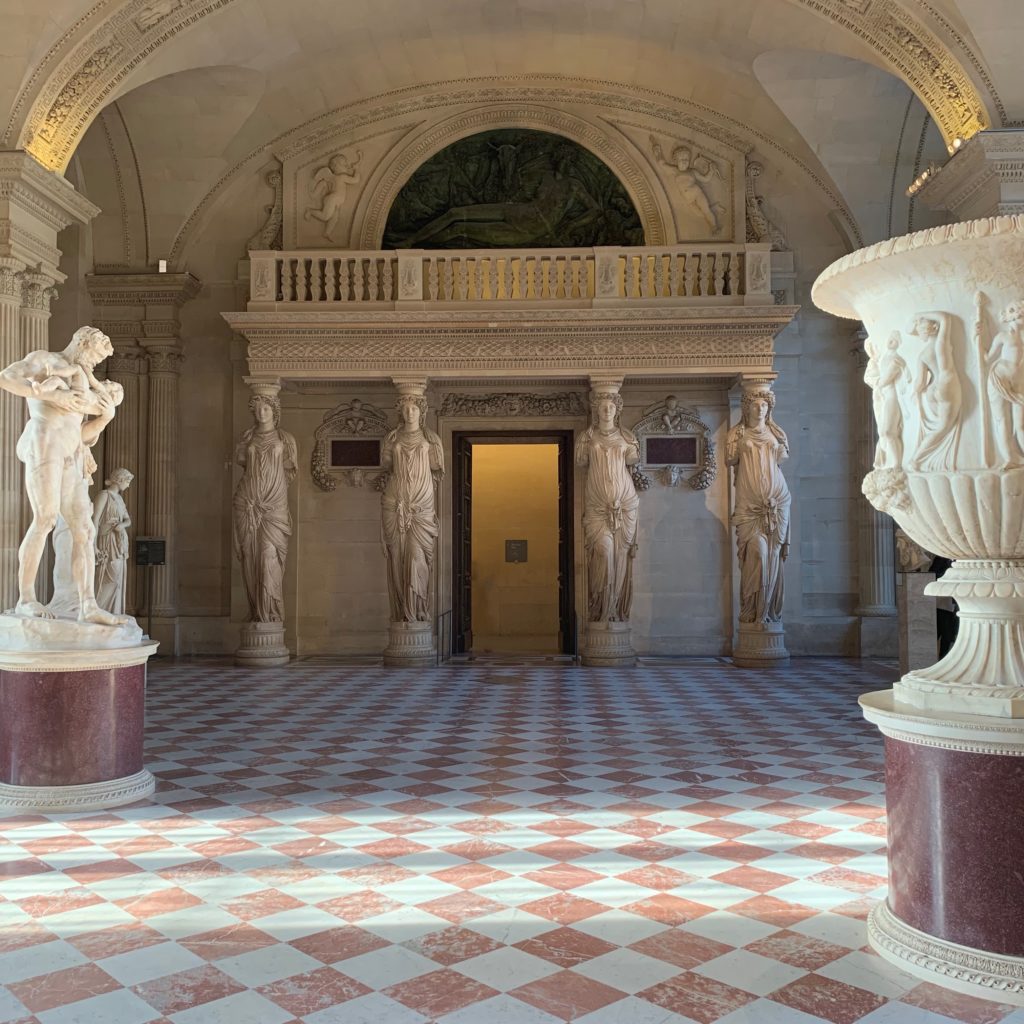
As you enter, you walk beneath the one-time musicians’ gallery, supported by the first caryatids seen in Paris. Back in those days, these walls were witness to Paris’s most spectacular parties. The ceiling was originally gilded wood, and it would have gleamed in the light of hundreds of glimmering candles. One of the era’s most iconic events was the marriage of Mary Queen of Scots to Catherine’s oldest son, the future François II, in 1558, in this very hall.
In 1572, le tout Paris came to celebrate the marriage of Henri de Navarre and Catherine’s youngest daughter, Marguerite de Valois, a.k.a La Reine Margot.

The marriage of Henri de Navarre, a Protestant, and Marguerite de Valois, a Catholic, came after decades of the Wars of Religion. The union wasn’t, however, to be the peacemaker many hoped for: the simmering tension erupted into bloodcurdling violence after the assassination of one of the Protestant leaders, Admiral Gaspard de Coligny. Thousands of Protestants had come to town to celebrate the wedding; most of them — women and children, too — never made it home. They were hacked to death, in houses, in the streets, throughout the Louvre … Bodies piled up in the courtyard in which you were just standing.
Catherine de Medici was behind the assassination that triggered the violence — known as the Saint Bartholomew’s Day massacre — and although she might not have envisaged the gruesome outcome, her involvement earned her the moniker of the Black Queen, and infamy that haunts her memory hundreds of years on. So much so that history often forgets she was a visionary leader, having learnt well from her father-in-law. She forged ahead with the renovation of the Louvre.
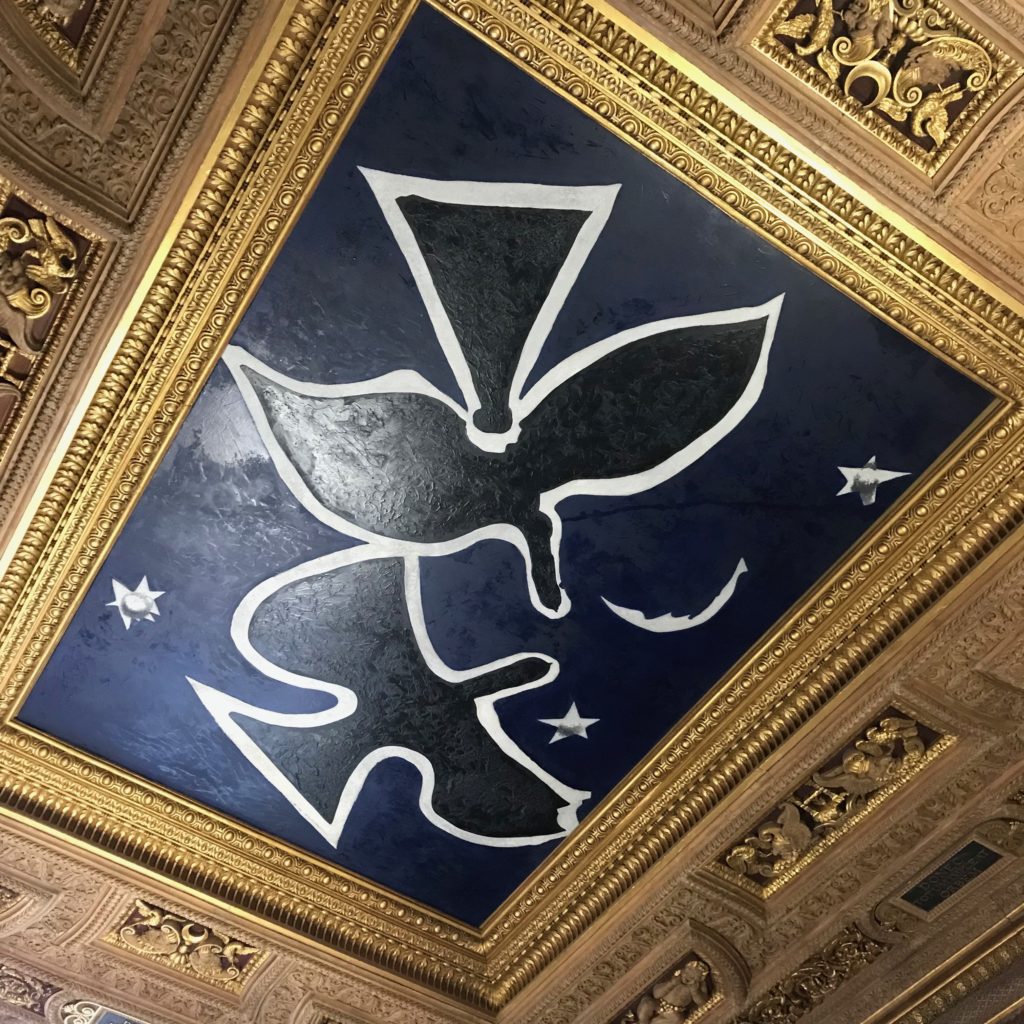
As you walk through the next two rooms, the Chambre de Parade and the Antichambre du Roi, look up to see wood-coffered ceilings from Catherine’s time. (The inset of Georges Braque’s painting Les Oiseaux, in the ceiling of the latter, dates from 1953).
Catherine had her own rooms in the south wing, around about where Venus de Milo stands today, but these have disappeared over history. She also began push the palace out towards and along the Seine; these plans were eventually finalised by her son-in-law, Henri IV, although these parts of the Louvre have mostly been reimagined and rebuilt over time. If you want to understand more about the history of the Louvre, go to the Sully basement for an interactive display, and to also see remains of the old medieval fortress.
The Lost Tuileries Palace
Soon after her husband’s death, Catherine envisioned a palace of her own, one of her own design, where she could revel in her love of architecture. It’s a sign of her genius of vision that she looked west, to just outside of the then city walls, where wolves were still known to roam. Paris had until now oriented eastwards; Catherine was the first to rethink this; in the future the Louvre would not be at the edge of the city, but rather at its very centre.
The land Catherine chose had once been home to tile factories, which inspired the palace’s name, Palais des Tuileries. This is what the Renaissance fairy-tale of a palace looked like in 1615 (after Henri IV built the Grande Galerie linking the Louvre to the Tuileries):
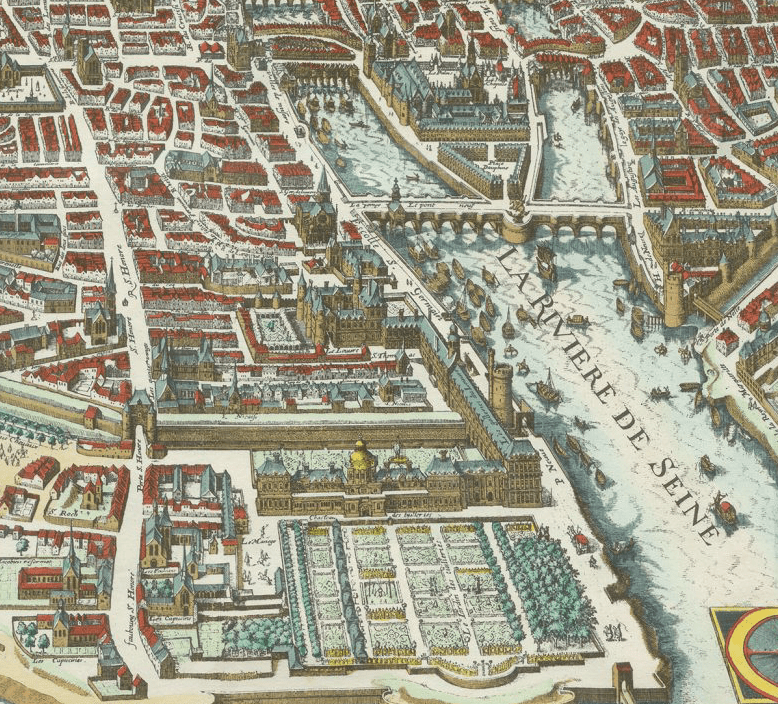
For a more modern context, this is how it appeared in the nineteenth century, before the 1871 fire that destroyed it:
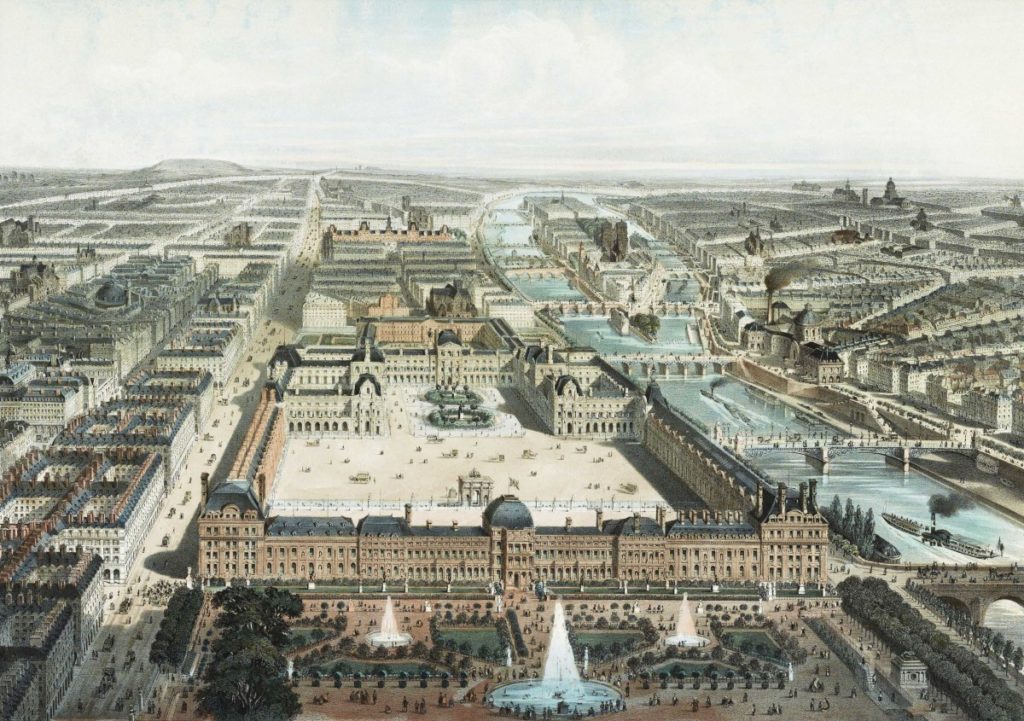
Catherine’s Tuilieries was a party palace, hosting a series of grandiose events that showcased dazzling performances of ballet and opera (Catherine is credited with importing the art forms from Florence), as well as lavish fashions, decorations and food.
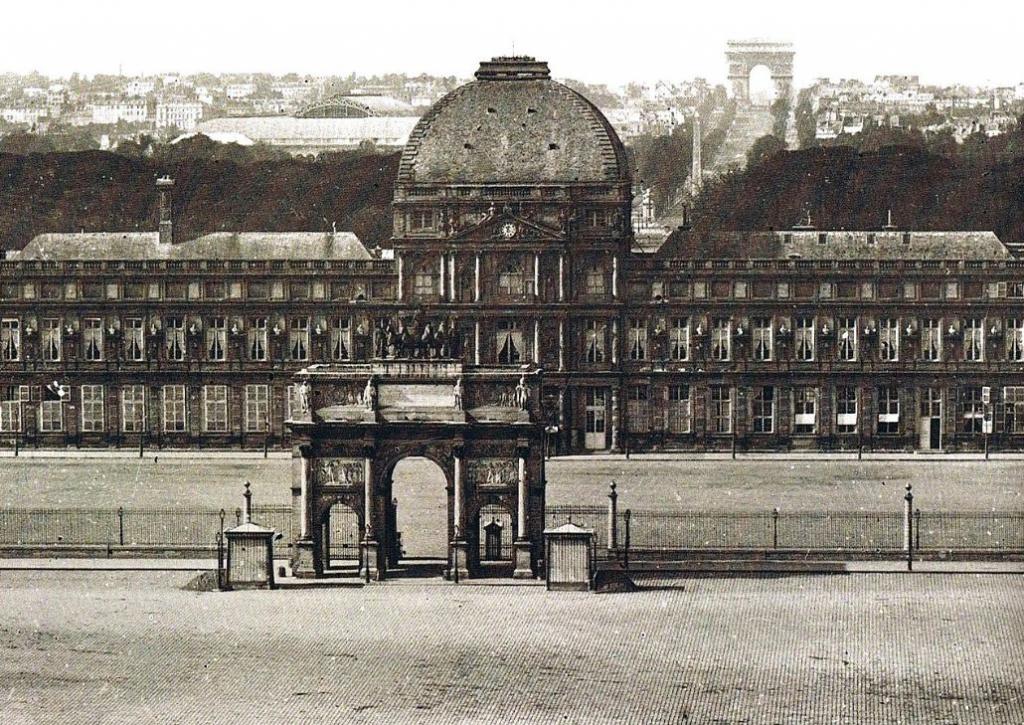
If you walk from the Louvre towards the Jardin des Tuileries, you pass beneath the sweet, pink-marbled Arc de Triomphe du Carrousel (above) — added by Napoleon I to serve as an entrance to the Tuileries, his official residence. You’ll then walk through the ghost of the palace …
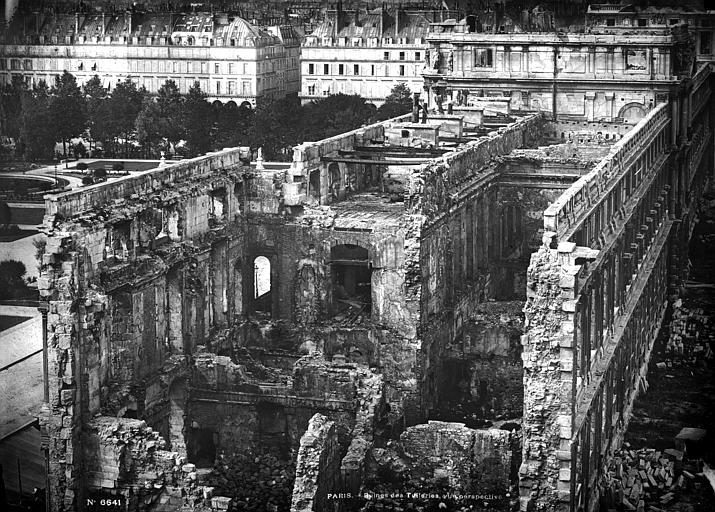
… and into the gardens. Continue wandering along the southern edge and you’ll soon come across an old, disembodied archway …
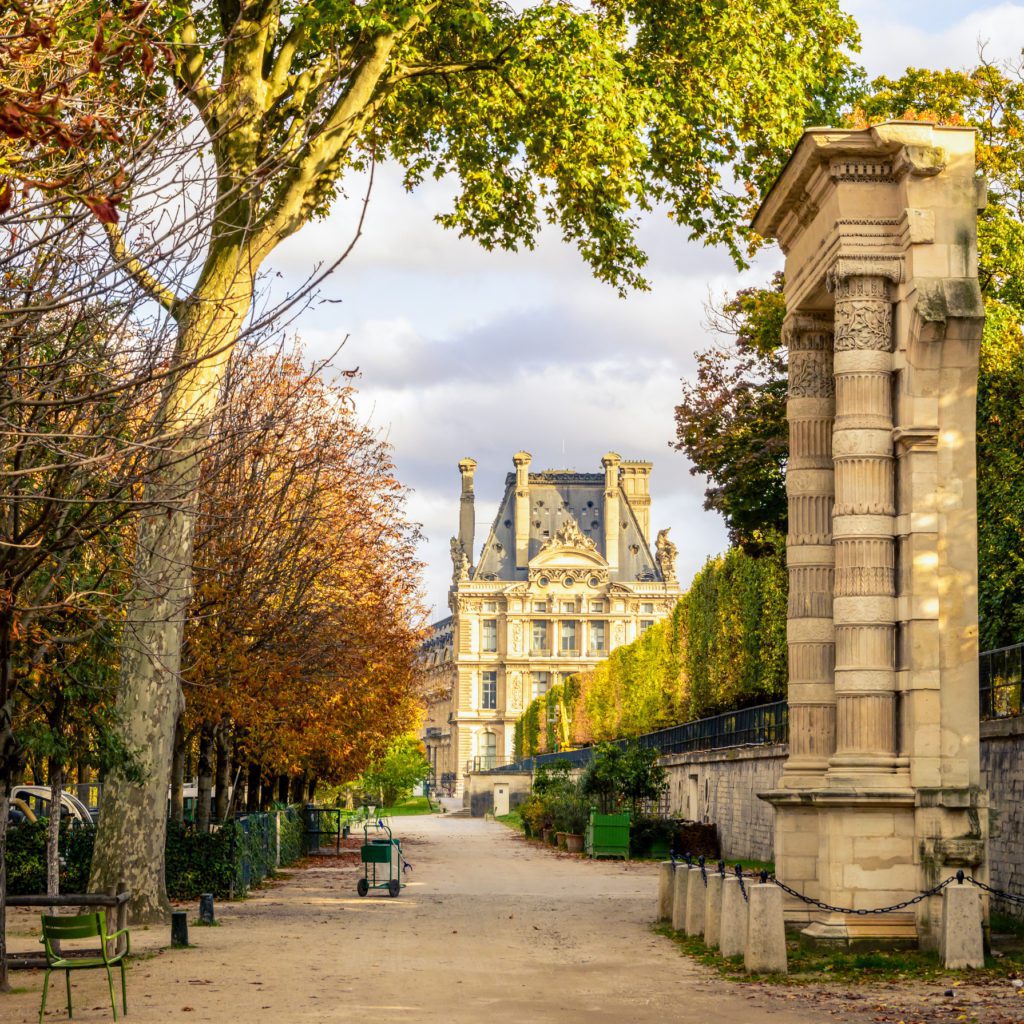
It’s one of the few remnants left of the Tuileries, once Europe’s epicentre of power and glamour.
Tuileries à l’Italienne
In Catherine’s time, the palace grounds, now known as the Tuileries, were a much more Italian affair than the garden’s present formal French style, which dates back to the 1664 redesign by André le Nôtre (of Versailles fame).
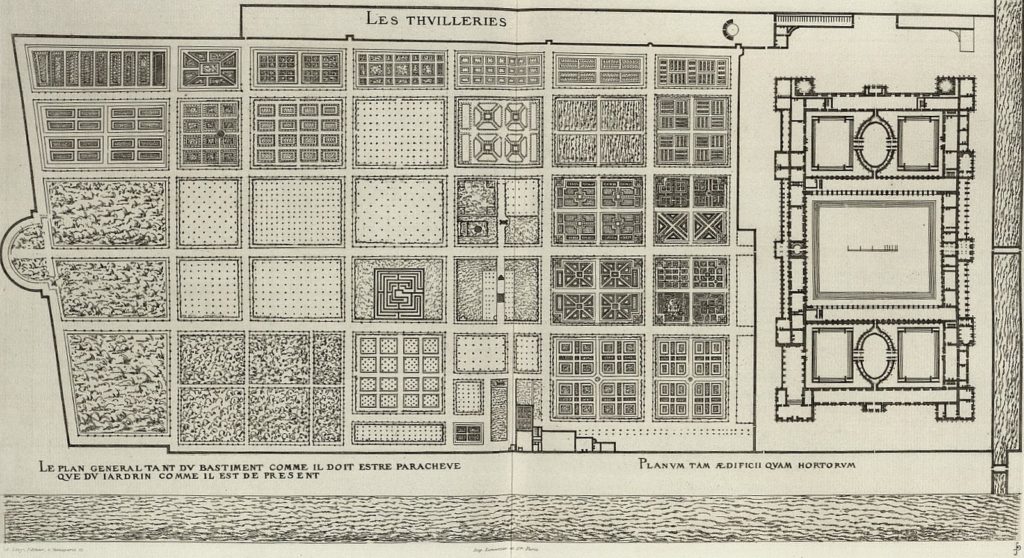
A fellow Florentine, Bernard de Carnessequi, created the Queen Mother’s dream garden, a fantasia of flower-embroidered parterres and swirling labyrinths, leafy arbours and fruit-covered trellises, canals and fountains, and grottos complete with glazed ceramics by celebrated engineer and craftsman, Bernard Palissy (some of his recovered works are on display in the abovementioned History of the Louvre rooms).
Like the palace, the garden hosted spectacular parties. One of the famous circa-1575 series of ‘Valois Tapestries’ depicts a garden party for the Polish ambassadors, and it shows how the Tuileries would have been very much a glamour wonderland:

But for Catherine, the garden was as ideal for intrigue as for entertaining; it’s said that this is where she plotted the Saint Bartholomew’s Day massacre, for there were many shady nooks that doubled as cones of silence for sensitive conversations.
The Lone Column of the Hôtel de la Reine
Wander around the experior of the Bourse de Commerce, Paris’s new contemporary art museum and you’ll notice a curious Doric column tacked to the side of the round structure, which was built in the 1760s to function as a grain exchange.
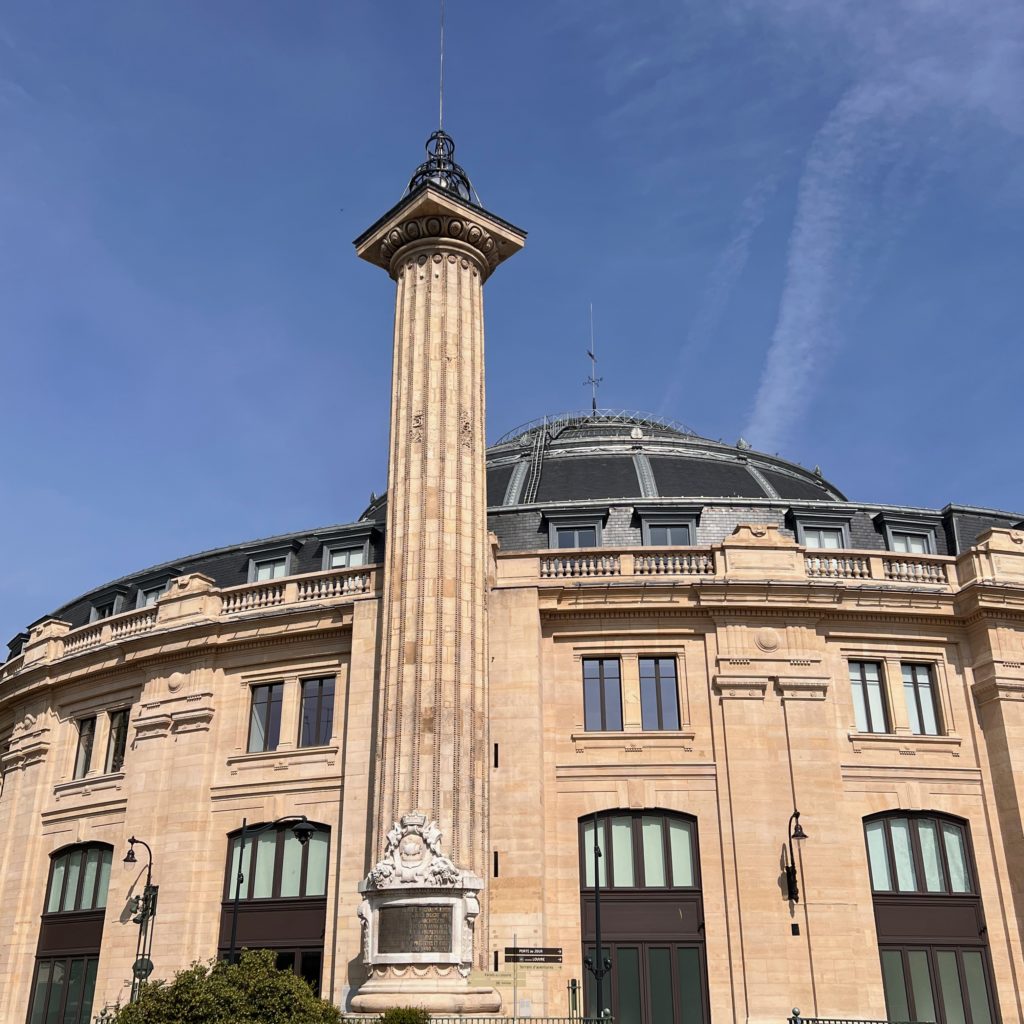
This is all that’s left of Catherine’s other Parisian palace, the Hôtel de la Reine, which began construction in 1574.

Catherine filled her ‘Queen’s House’ with paintings of loved ones, her various collections of curiosities, and all sorts of toys and games, for it was to be her happy place, a haven away from the Louvre and its intrigues — perhaps Catherine, now in her sixties, had grown weary from all the work she had had to do to keep herself and her family in power.
Within the walled garden were an aviary, orangery and a lake, as well as the famous column. As you can see to this day, it’s decorated with interlaced Hs and Cs, for she was still in love with her late husband, but it was more than a memorial. The Medici Column, as it’s now called, was once referred to as La Colonne de l’Horoscope. Catherine indulged in a life-long passion for astrology; the Ruggieri brothers, renowned astrologers (and feared black-magic makers), accompanied Catherine to France all those years ago, and throughout her life she sought counsel (and who knows what else) from the Ruggieri. The column of her Hôtel de la Reine is thought to have been an astronomy observation tower — a staircase spiralled up to the top viewing platform, where there was once a large metal cage of a dome for safety.
The Queen Mother had once been told she would die near Saint-Germain. Perhaps this is why she abandoned her Tuileries Palace, to be further away from the parish of Saint-Germain, which had been just across the river. Alas, fate was to catch her. As she lay on her death bed, it was her son’s confessor and not her usual priest who performed her last rites. His name? Julien de Saint-Germain.
The Serpent Queen …

The Serpent Queen is currently streaming in selected markets (Hulu in the United States; Stan in Australia; StarzPlay in the UK). The stunning locations used include the Châteaux de Chambord, de Chenonceau (which Catherine took from Diane de Poitiers on her husband’s death) and de Villandry.

